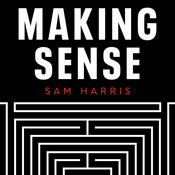535 afleveringen

Liveability centred around choice - Maurice Berger and Raquel Medrano Clemente (388I trailer 1)
19-12-2025 | 2 Min.
Are you interested in liveability as choices? What do you think about cultural evolution? How can we create a community of changemakers? Trailer for episode 388 - interview with Maurice Berger and Raquel Medrano Clemente, co-founders of Liveable Cities Collective. We will talk about their vision for the future of cities, liveability, cultural evolution, human connection, and many more.Find out more in the episode.Episode generated with Descript assistance (affiliate link).Music by Lesfm from Pixabay

386I_Niklas Anzinger, Founder & CEO of Infinita City, General Partner of Infinita VC
17-12-2025 | 50 Min.
"My take on the future of cities that it's not the physical part that needs innovation ... what we hasn't figured out in the governance part."Are you interested in service-based governance? What do you think about governance innovation? How can we create more autonomous cities? Interview with Niklas Anzinger, Founder & CEO of Infinita City, General Partner of Infinita VC. We will talk about his vision for the future of cities, difference between governance and government, autonomous cities, people voting with their feet, and many more. Niklas Anzinger is the Founder & CEO of Infinita City and General Partner at Infinita VC. Based in Próspera, Honduras, he is building a network of hubs for longevity biotech acceleration. Infinita hosts startup competitions (e.g. BioHub), events (e.g. the upcoming Infinite Games 2026) and works with policymakers on enabling legislation like Montana's recent SB 535 right-to-try law.Find out more about Niklas through these links:Niklas Anzinger on LinkedIn@NiklasAnzinger as Niklas Anzinger on X@niklasanzinger as Niklas Anzinger on InstagramInfinita City websiteInfinita City on LinkedIn@infinitacity as Infinita City on [email protected] as Infinita City on InstagramInfinita City on YoutubeInfinite Games 2026 websiteStranded Technologies Podcast on LinkedinConnecting episodes you might be interested in:No.030 - Interview with Ville Sirviö about Estonia's e-governanceNo.090 - Interview with Matthew McCartney about the connection between cities and economicsNo.294 - Interview with Erick A. Brimen about Prospera HondurasNo.395R - The Honduran ZEDE law, from ideation to actionWhat was the most interesting part for you? What questions did arise for you? Let me know on Twitter @WTF4Cities or on the wtf4cities.com website where the shownotes are also available.I hope this was an interesting episode for you and thanks for tuning in.Episode generated with Descript assistance (affiliate link).Music by Lesfm from Pixabay

Human nature and innovation - Niklas Anzinger (386I trailer 3)
16-12-2025 | 2 Min.
Are you interested in service-based governance? What do you think about governance innovation? How can we create more autonomous cities? Trailer for episode 386 - interview with Niklas Anzinger, Founder & CEO of Infinita City, General Partner of Infinita VC. We will talk about his vision for the future of cities, difference between governance and government, autonomous cities, people voting with their feet, and many more. Find out more in the episode.Episode generated with Descript assistance (affiliate link).Music by Lesfm from Pixabay

385R_The Honduran ZEDE Law, from ideation to action
15-12-2025 | 17 Min.
Are you interested in new forms of governance? Debate of the article titled The Honduran ZEDE Law, from ideation to action from 2021, by Jeffrey Mason, Carl Peterson, and Daniela Ivette Cano, published in the Journal of Special Jurisdictions.This is a great preparation to our next interview with Niklas Anzinger in episode 386 talking about the opportunities in the Prospera Honduras governance experiment. Since we are investigating the future of cities, I thought it would be interesting to see how new forms of governance in special economic zones could work. This article presents the legal framework for the Honduran special economic zone, highlighting and contrasting economic and governance models within this innovative legal framework.Find the article through this link.Abstract: Honduras has struggled to attract the investment needed to spur sustained economic growth in recent decades, and as a result remains one of the poorest countries in Latin America and the Caribbean. To attract greater foreign investment, the Honduran government passed a groundbreaking special economic zone (SEZ) law in 2012 creating Zonas de Empleo y Desarrollo Económico (Zones for Employment and Economic Development) or ZEDEs. Among the most innovative special jurisdictions in the world, ZEDEs grant sweeping legal and regulatory autonomy to allow for improved governance and economic competitiveness, in order to attract greater investment in Honduras. In this paper, we detail the political and legislative history of the ZEDE law, offer a textual analysis of the ZEDE statute, discuss the principal objections to the ZEDE law and responses to those objections, and provide case studies of the first two ZEDEs.Connecting episodes:No.293R - Rethinking the governance of urban infrastructural transformations: a synthesis of emerging approachesNo.294 - Interview with Erick A. Brimen about Prospera HondurasYou can find the transcript through this link.What was the most interesting part for you? What questions did arise for you? Let me know on Twitter @WTF4Cities or on the wtf4cities.com website where the shownotes are also available.I hope this was an interesting episode for you and thanks for tuning in.Episode generated with Descript assistance (affiliate link).Music by Lesfm from Pixabay

Governance services form a monopoly or the market - Niklas Anzinger (386I trailer 2)
14-12-2025 | 2 Min.
Are you interested in service-based governance? What do you think about governance innovation? How can we create more autonomous cities? Trailer for episode 386 - interview with Niklas Anzinger, Founder & CEO of Infinita City, General Partner of Infinita VC. We will talk about his vision for the future of cities, difference between governance and government, autonomous cities, people voting with their feet, and many more. Find out more in the episode.Episode generated with Descript assistance (affiliate link).Music by Lesfm from Pixabay
Meer Wetenschap podcasts
Trending Wetenschap -podcasts
Over What is The Future for Cities?
Luister naar What is The Future for Cities?, We zijn toch niet gek? en vele andere podcasts van over de hele wereld met de radio.net-app

Ontvang de gratis radio.net app
- Zenders en podcasts om te bookmarken
- Streamen via Wi-Fi of Bluetooth
- Ondersteunt Carplay & Android Auto
- Veel andere app-functies
Ontvang de gratis radio.net app
- Zenders en podcasts om te bookmarken
- Streamen via Wi-Fi of Bluetooth
- Ondersteunt Carplay & Android Auto
- Veel andere app-functies


What is The Future for Cities?
download de app,
luisteren.




































